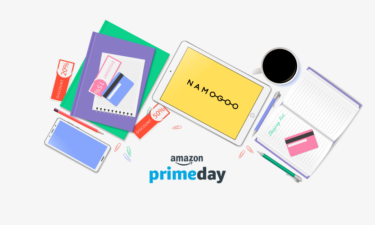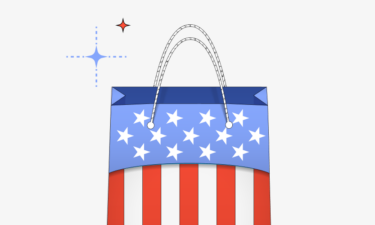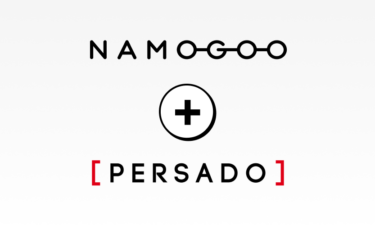Does your eCommerce company have positive brand equity or negative brand equity?
You may assume if sales are good, your brand equity must be good, right?
Unfortunately, that’s not always the case, as you’ll see in this guide.
And if you’re only going by that metric, your brand equity may be falling faster than you even realize — which is definitely a bad sign.
That’s why we’re taking a deep dive into everything you need to know about brand equity today.
You’ll learn exactly what brand equity is and why it’s so vital for the success of your business.
You’ll also discover how to build, measure, and improve your brand equity. And you’ll find the top sources of brand equity and some brand equity examples to help guide your team to greatness.
To start, let’s define the term so we’re all on the same page.
What Is Brand Equity?
Why Is Building Brand Equity So Important?
7 Perks Of Building Positive Brand Equity
10 Downsides Of Negative Brand Equity
How To Build Brand Equity In 5 Steps
How To Measure Brand Equity
4 Positive Brand Equity Examples
3 Negative Brand Equity Examples
So How Will You Start Improving Your Brand Equity?
What Is Brand Equity?
Brand equity is a multifaceted term to describe how your brand is perceived and valued by consumers.
When you think of the term brand equity, you may imagine a company’s value in terms of stock prices, assets, liabilities, etc. But that’s not what brand equity refers to.
Brand equity encompasses your:
-
- Brand perception, or what consumers think your brand represents.
- Brand recognition. Can consumers easily recognize your brand amidst the sea of other options? What’s your brand awareness like?
-
- Brand image, which covers how your brand makes people feel and whether it gives them a favorable or unfavorable impression.
- Brand value, i.e., whether consumers think your prices are worth it compared to cheaper alternatives and other competitors in the space.
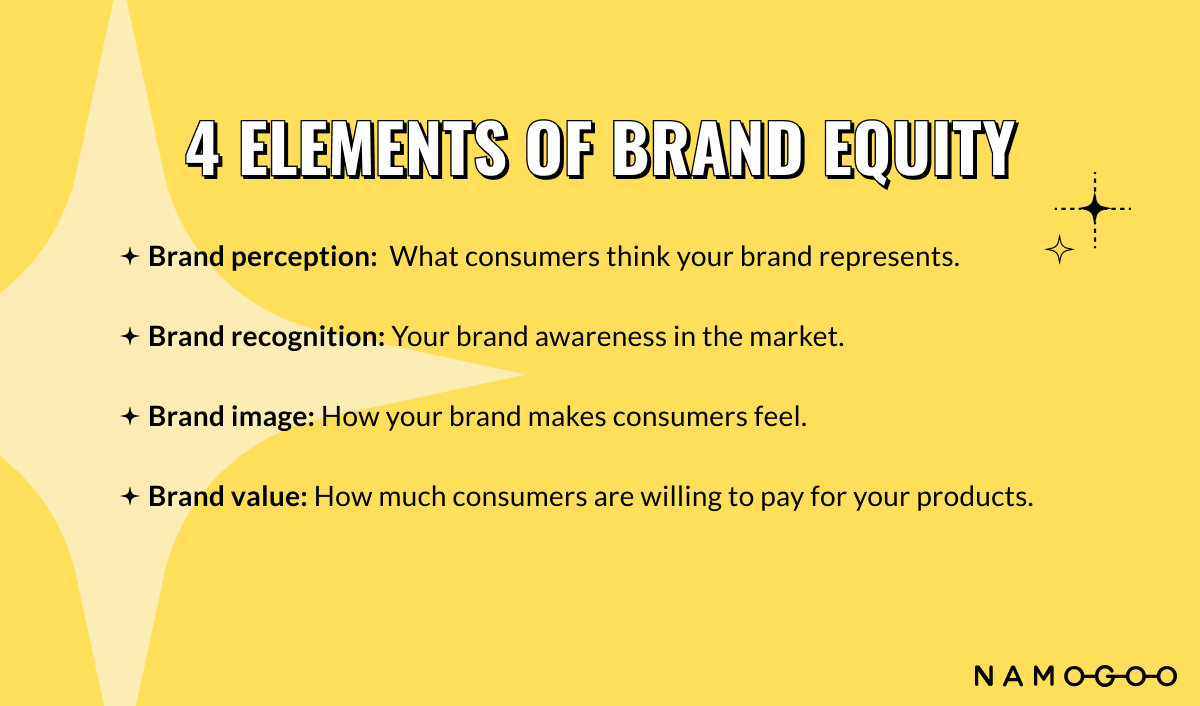
Ace these components, and you’ll build positive brand equity (and score tons of great perks we’ll discuss later). Fail on these fronts, and you’ll have negative brand equity on your hands, which may wipe out your company in a few months.
And that leads to our next question:
Why Is Building Brand Equity So Important?
Your brand equity can make or break your company.
So let’s compare the benefits of high brand equity vs. the drawbacks to low brand equity:
7 Perks Of Building Positive Brand Equity
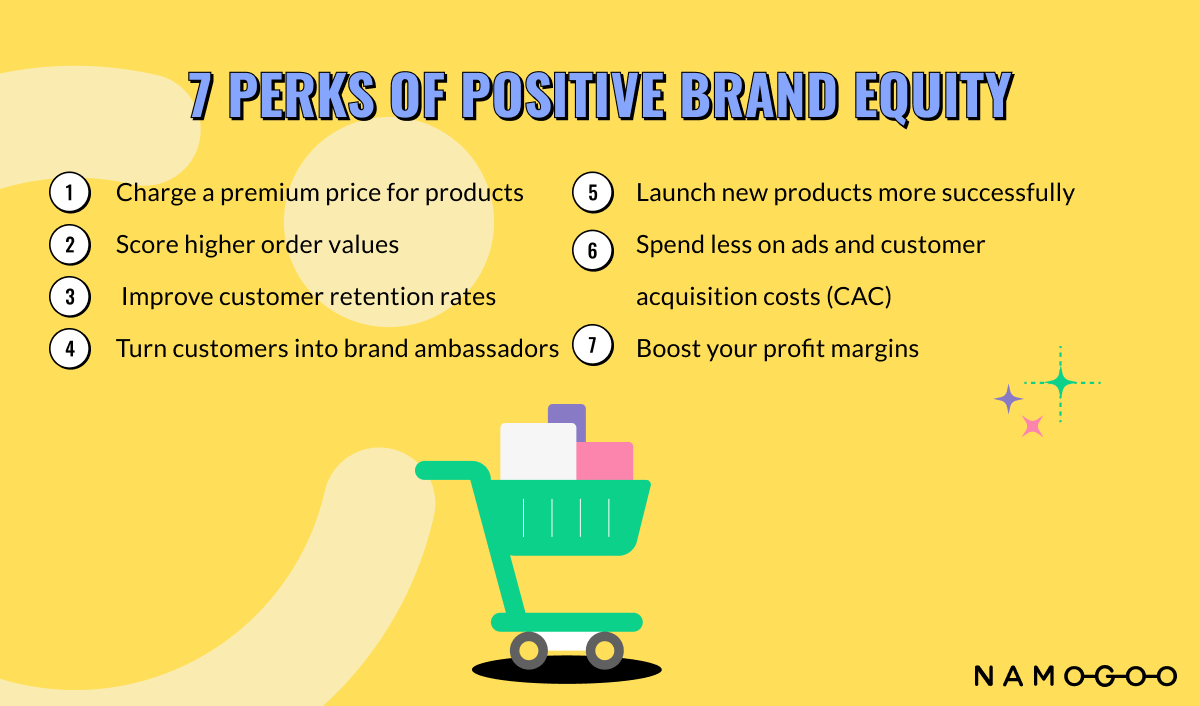
Essentially, positive brand equity increases your ROI because it allows your business to:
- Charge a premium price for products (and get it!). When customers are so invested in your company, they won’t think twice about spending a bit more on your brand’s products over cheaper competitors. They’re willing to pay more because they see your brand’s value and worth.
- Score higher order values. There are two reasons for this. The first and most obvious is that premium prices lead to higher average order values. The second reason that positive brand equity can help you to drive up average order value is that with brand equity comes brand loyalty, and your customers will be more open to trying a wider range of products you offer, making cross- and upselling easier.
- Improve customer retention rates. Delivering value keeps customers loyal to your brand. Customers will consider your brand the “easier” option when it comes time to repurchase. Since they know they can trust your brand, this will be one less thing they have to think about and evaluate.
- Turn customers into brand ambassadors. Research shows that customer referrals are one of the most effective customer acquisition channels[*]. And positive brand equity encourages your customers to recommend your brand to others because they feel good about giving your company their stamp of approval to their friends and family.
- Launch new products more successfully. Because consumers trust your brand and quality standards, they’re more willing to take a chance to try the new products you release.
- Spend less on ads and customer acquisition costs (CAC). When consumers think favorably about your brand, you don’t have to spend as much on ads and outreach to convince them to try or buy your products. Your brand equity does the heavy lifting for you
- Boost your profit margins. Raising prices while simultaneously enjoying low customer acquisition costs can lead to significantly higher profit margins.
All these reasons prove increasing your brand equity is definitely worth the time and effort. But what if you slack off in this department?
10 Downsides Of Negative Brand Equity
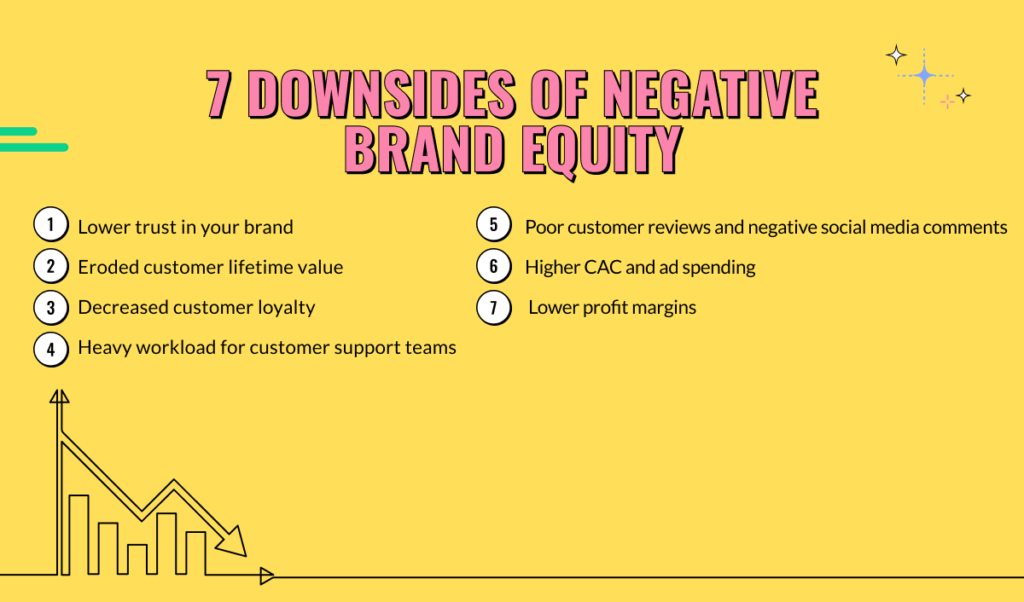 Having low brand equity is not only a tough spot to be in but incredibly challenging to get out of, as you’ll see later in our section on negative brand equity examples.
Having low brand equity is not only a tough spot to be in but incredibly challenging to get out of, as you’ll see later in our section on negative brand equity examples.
When your brand’s equity is in the tank, you’ll have to deal with:
- Lower trust in your brand: If consumers perceive a brand to be not trustworthy, the brand will have a tough time rebuilding that trust.
- Eroded customer lifetime value: When customers view a brand negatively, they typically don’t continue to do business with that company, reducing customer retention and therefore lifetime value, arguably the most important eCommerce health metric.
- Decreased customer loyalty: Companies that have high market share can have more success with negative brand equity. After all, there aren’t many other viable options…yet. But those brands should watch out, because when a competitor enters the market with better brand equity, consumers won’t hesitate to leave.
- Heavy workload for customer support teams: The lower the brand equity, the more customer complaints, returns and exchanges, and workload the customer support team has to bear.
- Poor customer reviews and negative social media comments: These are public channels through which most consumers will either find out about or research a brand. These negative reviews and comments could be many would-be customer’s the first touchpoint with your brand.
- Higher CAC and ad spending: If your brand perception is poor, it’ll take a lot more convincing and a longer customer journey to drive conversions.
- Lower profit margins: Consumers that perceive a brand negatively are more likely to expect a discount. Many will even refuse to convert without one. This kicks off the promotion cycle: an endless cycle of discounting products to make the sale, only to have to discount again and again.
This downward spiral of costly consequences can quickly get out of hand, which is why it’s crucial to work on building positive brand equity ASAP.
How To Build Brand Equity In 5 Steps
What’s the best way to build brand equity?
Kevin Lane Keller, a marketing professor at the Tuck School of Business at Dartmouth College, created what’s known as Keller’s Brand Equity Model. His brand equity pyramid is widely considered the gold standard for building brand equity in marketing, branding, etc.
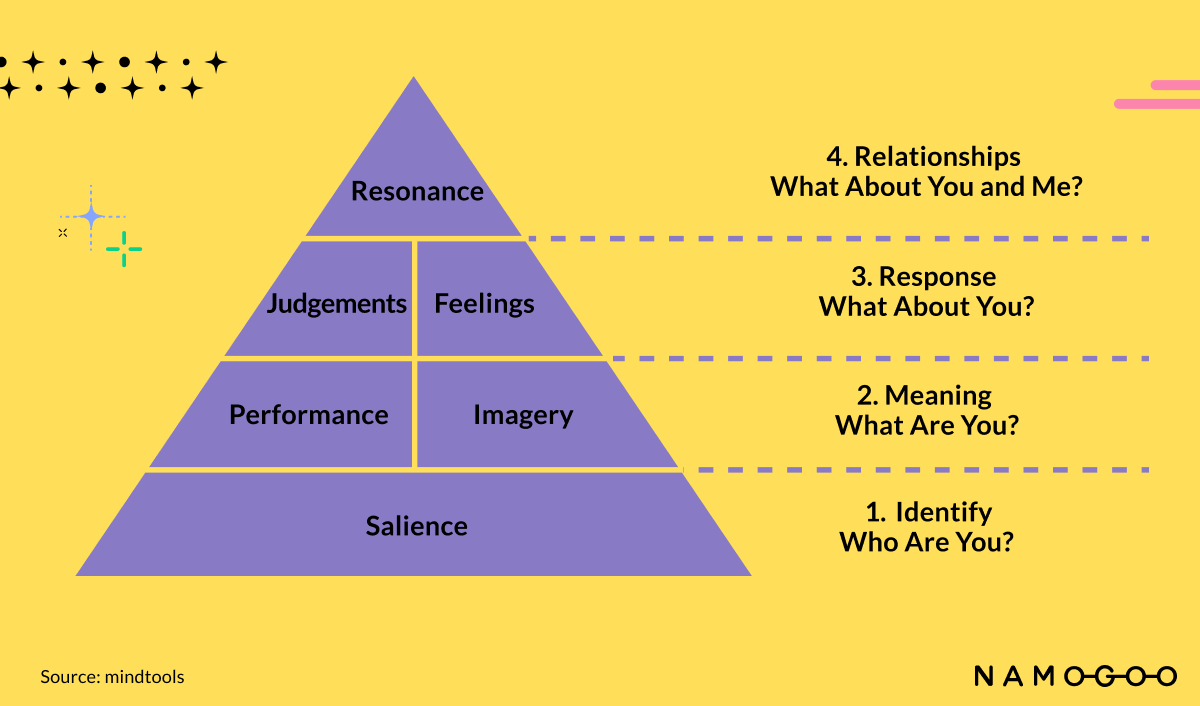
Companies use this model to map out their plan for building customer experiences that shape the way people think, feel, and perceive their brand.
While you don’t necessarily have to stick to Keller’s brand equity index, the following steps should give you a solid baseline for creating positive brand equity:
Step 1: Work On Your “Why”
While companies exist to make money, if customers feel that a brand is only around for the profits, they’ll take their money elsewhere.
Customers must connect with brands on a deeper level to create positive brand equity.
That’s why your company must narrow down your “why,” or reason for being that goes beyond generating a profit. Answering these questions can help you uncover this:
- Why does your company exist?Why do you want to help people solve this problem?
- Why should customers choose your brand over others?
- What value will customers get from your brand?
- What is your company’s vision?
These answers should serve as your guiding principles. Every decision your team makes should reflect these to stay on-brand.
The more customers understand and resonate with your values and reasons, the more brand equity you’ll build with them.
Your principles should also go hand-in-hand with this next step:
Step 2: Understand Your Customers’ “Why” So You Can Serve Them Better
Once you outline your “why,” you’ll need to understand your customers’ reasons for purchasing. What are their biggest pain points and problems they need help solving?
Figure these out, and you’ll know exactly how to create a better shopping experience for them.
To do this, brainstorm with your team about your customers’ wants/needs and think about what it will take to fix them.
You’ll probably need to do some heavy market research and send out surveys/questionnaires to truly dig deeper rather than simply making assumptions.
You may be tempted to fall back on your customer personas and call it a day. So resist this urge! A lazy approach definitely won’t work here.
To create exceptional products and an unforgettable experience, you need the most accurate and in-depth picture of who you’re actually selling to.
Brands that take this step seriously and spend the necessary time getting to know the ins and outs of their customer base have a much better chance at building positive brand equity.
Step 3: Build Exceptional Products And An Incredible Customer Experience
No amount of good press or word-of-mouth praise can make up for low-quality products and a poor customer experience. Period.
The foundation of your brand equity must be built on amazing products and an enjoyable shopping journey. So how do yours stack up?
To upgrade your product quality, consider and ask your team:
- Do our products solve our customers’ problems?
- Do they live up to our customers’ expectations?
- What makes our products better than our competitors’?
- What do our competitors do better?
- What could we improve to make our customers happier?
Chances are, aspects of your product lineup could always use a bit of a glow-up. Just because something worked well in the past doesn’t mean it’s a competitive edge now or in the future. So how can you be more innovative?
After making your products irresistible, you’ll need to focus on your customer experience. This includes every interaction your customers may have with your brand.
To ensure a pleasurable customer experience, see if you can:
- Optimize your eCommerce store for conversions, so it’s easier for shoppers to navigate and find what they’re looking for. Improve the user experience, ensure page load times are speedy, shorten the checkout process, and tweak your product descriptions, images and videos.
Ensure that you are serving the right offer to each customer to maximize their chances of converting. For example, WAG offers different discounts depending on each customer’s intent:

-
- Bonus: this will also help to reduce shopping cart abandonment rates and improve your conversion rate.
- Add product reviews and user-generated content, which help build trust in your brand and products. Shoppers will feel more comfortable believing and purchasing from your brand when they see others have done so successfully.
- Ensure consistency between your website, social media channels, and other retailers. Consistent copy, product images, pricing, etc., build trust and heighten brand perception.
All these ingredients go a long way in building positive brand equity.
Continue evaluating these points often, so your brand evolves and adapts to the changing needs of your customers.
Step 4: Provide Outstanding Customer Service
If your customer service is lacking, all the work you’ve done so far won’t be able to make up for it.
Negative customer service experiences will always drag your brand equity through the mud, especially if repeated often. And this can leave a lasting impression that dominoes to potential new customers.
Your brand may get bogged down in negative online reviews and social media comments blasting the bad experiences to anyone who comes across them.
That’s why you’ll need to prioritize exceptional customer service across all your channels, from online chat support to phone assistance, email, social media, and more.
Here are a few questions to ask your team to help identify what needs improving:
- Do customers find it easy to get in touch with our team?
- What is the most common way customers ask questions, bring up problems, need assistance, etc.?
- What is our current turnaround time when a customer reaches out?
- Do customers find our support/answers helpful?
- How does our team handle complaints and feedback?
- Do we have any recurring problems that haven’t been addressed/fixed?
- Should we create an FAQ or knowledge base to let customers help themselves?
Look at your customer service as if you were a customer. Would you be happy with the level of service your team is providing? If not, it’s time to fix things starting today.
Step 5: Be Open To Hearing And Implementing Customer Feedback
Companies with high brand equity create a safe space for their customers to discuss concerns, share feedback, and have their voices heard.
However, it’s not enough to collect this feedback and file it away. You must show your customers that you value their input and take it seriously. So it’s imperative to show consumers how you’ve implemented changes based on their ideas/concerns.
This helps build brand equity in two ways:
- It allows your brand to create better products and serve customers better. Consider this feedback valuable market research directly from your customers’ mouths to your board room. Use it wisely.
- It creates loyal, appreciative customers who believe your company truly cares about people and wants to make them happy.
The more you can garner and implement feedback from your customers, the better. Customers are also more likely to forgive a blunder if you accept your mistake and correct it after hearing their complaints.
So there you have it: five easy ways to build brand equity. Add these to your agenda, and make sure to track and monitor your progress to see whether your efforts are paying off.
How To Measure Brand Equity
As you start to build brand equity, you need to track your efforts to see how you’re progressing. The results from these metrics and key performance indicators (KPIs) will show you whether you need to make adjustments or keep doing what you’re doing:
- Sales. If your sales have suddenly dipped, it may be a red flag that your brand equity is falling too. On the other hand, if sales are continually increasing, your brand equity may be in good shape. But don’t take this metric into consideration on its own.
- Customer retention. How long are customers staying with your brand? The longer they stay on board, the better your brand equity. So if you’re seeing higher turnover rates, it’s time to uncover what’s really going on.
- Net promoter score (NPS) and referrals. An NPS measures how likely customers are to refer your brand to others. A referral program can help you track whether your existing customers are recommending your brand and reward those who do. High referral rates show your brand equity is probably also high.
- Customer acquisition costs. Skyrocketing CAC proves you’re spending a lot to convince new customers to try your brand, which could be a sign that your brand equity isn’t there. Decreasing CAC, on the other hand, says your brand may be gaining traction and popularity thanks to your improving brand equity.
- Customer complaints. Are you seeing rising complaints or similar ones over and over? These will definitely chisel away at your brand equity, so it’s worth paying attention to and fixing immediately. Fewer complaints means you’re making progress in the right direction.
Now, you shouldn’t look at these metrics individually and assume one good KPI means you’re on track. Consider each just a part of your brand equity puzzle. Keep addressing each one with a brand equity management system until they’re all where they should be.
Continue to evaluate all five metrics so nothing slips through the cracks.
4 Positive Brand Equity Examples
If you need a positive brand equity model to mimic, consider:
1. Apple
Apple is probably the biggest and best example of a company with high brand equity. Apple customers are willing to pay top dollar any time a new product drops. Many are so loyal to the brand that they won’t even check out competitor offerings.
2. TOMS
Shoe brand TOMS made a name for themselves with their positive brand equity. Their buy-a-pair-give-a-pair model helps customers feel good about their purchases because each sale helps people in need.
TOMS’ mantra, “We’re in business to improve lives,” puts their values front and center, hitting on one of our earlier points (find your “why”). Customers connect with this positive sentiment and choose to buy from them instead of purchasing shoes elsewhere for less.
3. Starbucks
Starbucks created a recognizable brand image that boosts its perceived value to coffee- and tea-lovers around the globe. Their attention to consistently producing a high-quality product and creating a pleasant experience in their cafes allows them to charge a premium and inspire fervent loyalty.
4. TeePublic
An excellent example of an eCommerce store with positive brand equity is the online t-shirt company TeePublic.
This brand has over 150,000 reviews on TrustPilot and an average of 4.4 stars. 82% of the reviewers rated the brand either “Excellent” or “Great”.
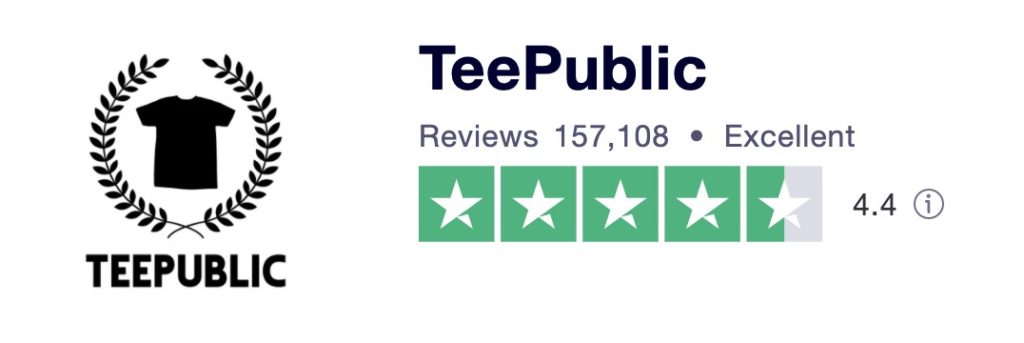
Even customers who experienced delays or errors with their orders rate the company highly. Check out this newly minted 5-star review by a customer who experienced a shipping error:
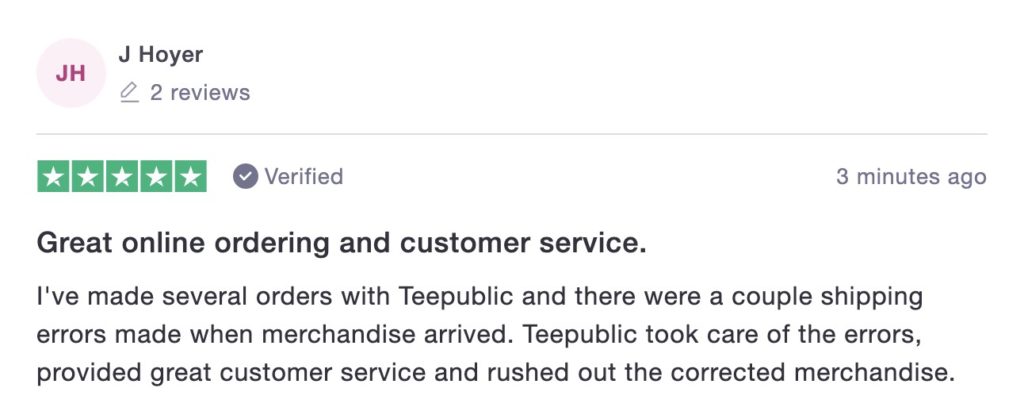
That is the power of positive brand equity.
The brand helps independent creators make money while using sustainable, toxin-free printing partners and 100% biodegradable, vegan, water-based inks for their products. They also follow ethical manufacturing processes.
TeePublic’s “why” became their biggest selling point: making sure they create positive experiences for artists, customers, and the environment.
The brand not only amassed tons of loyal fans but can also charge more for t-shirts because customers know the money’s going to a good cause.
Take a page out of these companies’ books, and you’ll be able to increase your brand equity too.
3 Negative Brand Equity Examples
On the flip-side, these companies made errors that cost them brand equity points. Try not to copy their mistakes:
1. Victoria’s Secret
Lingerie giant Victoria’s Secret has been criticized for its unrealistic beauty standards and practices that disempower women, its own target market.
The company is actively trying to revamp its image and become a pro-feminist brand that’s more inclusive and representative of its customers.
2. Johnson & Johnson
Despite being reputable for over 130 years, healthcare brand Johnson & Johnson is currently battling very low brand equity.
After facing several lawsuits due to its talc-based baby powder increasing the risk of ovarian cancer, the company lost billions in payouts and incurred a major drop in brand equity.
3. McDonald’s
After the documentary Supersize Me! went viral, the hamburger chain faced harsh press and consumer boycotts for its unhealthy offerings.
McDonald’s got rid of their Supersize portions and added more healthy items to their menu to remedy the situation.
So How Will You Start Improving Your Brand Equity?
After reading this guide, you now know building your brand equity and consistently improving it provides your eCommerce brand with tons of financial benefits. But ignoring this task may cause irrevocable harm to your profits and reputation.
So now it’s time to draft a game plan to put this five-step process into action today!




